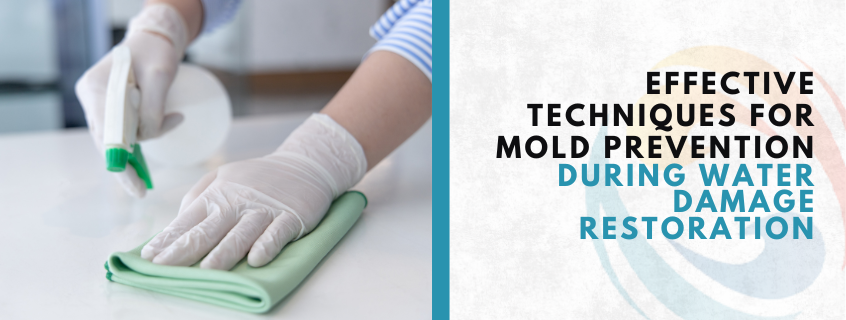Water damage can be one of the most stressful experiences for homeowners. Imagine you’ve just come home from a long day at work, only to discover a pipe burst. The floor is soaked, and you realize you’re not just dealing with inconvenience; potential mold grows with every second the water remains. Knowing effective techniques for mold prevention during water damage restoration is crucial. It can save your home and health. Implementing techniques for mold prevention can significantly reduce risks and protect your living environment.
Understanding the Dangers of Mold
Mold poses health risks and thrives in damp spaces. In Calabasas, warm weather and occasional rain increase growth risks. Prompt leak repairs and moisture control are essential for protecting health and property. Beyond health, mold can damage furniture, walls, and structural materials, leading to costly repairs. Implementing effective techniques for mold prevention—such as controlling indoor humidity, repairing leaks promptly, ensuring proper ventilation, and cleaning regularly—can protect both your home and health. Regular inspections and proactive maintenance are key to stopping mold before it becomes a serious problem, safeguarding your living environment and peace of mind.
Quick Response is Key
One of the most effective techniques for mold prevention starts with a rapid response to water damage. When water enters your home, time is of the essence. The quicker you act, the lower the risk of mold.
Utilizing techniques for mold prevention can help you address issues early and avoid extensive damages later. In Calabasas, these techniques for mold prevention will ensure your home remains safe and healthy year-round.
- Remove Water: Use a wet/dry vacuum to pump out standing water within 24 to 48 hours. If it’s a large area, consider reaching out to professionals.
- Dry the Area: Open windows, use fans, and consider dehumidifiers to speed up the drying process. Ideally, indoor humidity should be kept below 60%.
Assessing the Situation
Next comes an important step: assessing the damage. Identify all affected areas, including hidden spots like behind walls and under floors. Don’t forget about your belongings. Carpets and furniture that have absorbed water can harbor mold.
These techniques for mold prevention allow homeowners to take proactive measures and safeguard their property.
- Check for Hidden Water: Look for soggy areas, especially in places that don’t dry quickly, like bathrooms or basements.
- Salvage What You Can: Remove items that can’t be dried, such as cardboard or wet upholstery. These should be discarded properly.
Cleaning and Sanitizing
To effectively prevent mold, the cleaning process should not be taken lightly. Use proper cleaning agents, especially for porous materials like wood or drywall. In Calabasas, maintaining a clean environment is one of the most effective techniques for mold prevention.
Utilizing techniques for mold prevention can significantly enhance the quality of your indoor air.
- Sanitize Affected Surfaces: Use solutions with a mixture of water and bleach (1 cup of bleach to 1 gallon of water) but remember to wear protective gear like gloves and masks.
- Consider Specialized Cleaners: In some cases, you might want to explore mold-removal products that help inhibit mold growth.
The Right Temperature and Humidity Control
Monitoring your home is an ongoing technique for mold prevention that can save you from serious issues.
Controlling the environment is a critical technique for mold prevention. Mold spores thrive in warm, humid conditions, so keeping a cool, dry environment is essential.
- Maintain a Temperature Below 70°F: This can slow down mold growth significantly. Air conditioning can help maintain cooler temperatures and lower humidity.
- Use Dehumidifiers: Especially in areas prone to moisture like basements, dehumidifiers can help keep humidity levels in check.
Sealing and Insulating
Education is key; learning about techniques for mold prevention is vital for homeowners. Once the area is dry and clean, consider sealing and insulating affected areas to prevent future problems. From basement walls to windows, sealing gaps can prevent moisture from infiltrating your home.
- Insulate Pipes: Wrap insulation around pipes to prevent condensation buildup.
- Seal Cracks and Gaps: Use caulk or foam sealants around windows and doors to block moisture.
Incorporating techniques for mold prevention into your routine can enhance your home’s safety.
Monitor the Area
By employing these techniques for mold prevention, you can maintain a healthier home in Calabasas. After restoration and cleanup, it’s wise to keep an eye on previously affected areas. Regular monitoring can help catch potential mold growth before it becomes a problem.
- Visual Inspections: Check areas beneath sinks, around toilets, and in attics periodically.
- Utilize Moisture Meters: Consider investing in a moisture meter to detect hidden moisture levels in your home.
These techniques for mold prevention form the foundation of effective home maintenance.
Smart Strategies for a Healthier, Mold-Free Home
A mold-free home is essential for maintaining both health and property value. Mold thrives in damp, poorly ventilated areas, often causing respiratory problems, allergies, and structural damage if left unchecked. To protect your living space, focus on moisture control—repair leaks quickly, improve ventilation in kitchens and bathrooms, and use dehumidifiers in humid areas. Regularly inspect high-risk zones like basements, attics, and around windows. Prompt action after flooding or leaks is critical, as mold can begin to grow within 24–48 hours. For severe cases or extensive water damage, professional help is essential. Water Damage Restoration Calabasas can address the root cause, remove existing mold, and restore your property, ensuring a safer and healthier environment for you and your family. Prevention today saves costly repairs tomorrow.
FAQs About Mold Prevention During Water Damage Restoration
What should I do first after water damage?
Turn off electricity, remove standing water, and start drying the area with fans and dehumidifiers.
How can I prevent mold after a flood?
Clean and sanitize affected areas thoroughly, remove all moisture, and inspect regularly for hidden dampness.
Can I remove mold myself, or should I hire professionals?
Small mold patches may be cleaned with DIY methods, but widespread growth requires professional restoration.
What products help control mold growth?
Antifungal agents and specialized mold removers are effective. Professional water damage restoration services use high-grade products to ensure lasting results.
How do I know if my home is at risk for mold?
Watch for musty odors, visible spots, or consistently high humidity levels.



